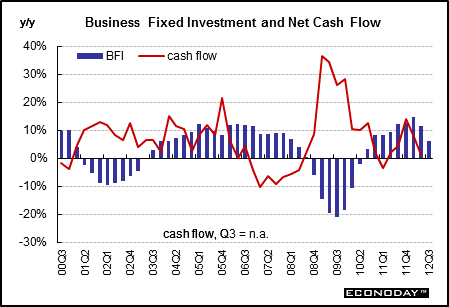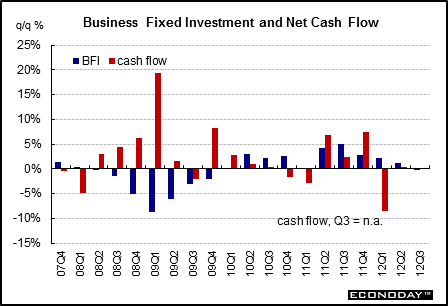 |

Cash flow is to business investment what income is to consumption expenditures. For a long time – between 1996 and 1999 – business fixed investment grew more rapidly than cash flow. The imbalance could not continue forever. Cash flow improved in 1999 and part of 2000 so that the growth of these two series were in better alignment. By the end of 2000, cash flow dropped more than business fixed investment once again suggesting that business fixed investment would weaken – and it did. Cash flow improved between 2001 and 2003, moderated in 2004 but generally improved in 2005 before weakening in 2007 and 2008 and into 2009. But businesses have slashed costs and revenues are gradually improving. As a result, cash flow was more positive in 2009 and in the first half of 2010. There was some softening in latter 2010, 2011, and in 2012.

Early and mid-2012 saw weakness in cash flow and sluggish business fixed investment as businesses became wary of slowing economic growth. Nominal (current dollar) business fixed investment in the third quarter slipped a quarterly 0.1 percent aft a modest rise of 1.2 percent (not annualized). Based on the latest numbers, cash flow edged up 0.3 percent in the second quarter after dropping 8.5 percent in the first quarter. Typically, one can look at cash flow as the income necessary to spur capital spending. After moderate cash flow in recent quarters, cash flow is wavering. Investment is still modestly positive but likely will be on two tracks. Equipment and software will likely continue to gain. Nonresidential structures will likely be held back by high vacancy rates and still tight financing.



Production & Sales •
Inflation •
Federal Reserve Policy •
Interest Rates
|
 |

